As the thermoplastic with the lowest density, polypropylene can be classified based on its molecular structure and applications.
According to the spatial arrangement of methyl groups (-CH3) in its molecules, it is divided into isotactic, syndiotactic, and atactic types.
For applications, it is categorized into film yarn, fibers, films, extrusion, blow molding, and injection molding grades; And by monomer type, it is divided into homopolymer and copolymer polypropylene.
So what are the differences between these types of polypropylene materials? Let’s delve deeper and find out!
What Is Polypropylene?
Before discussing the categories of polypropylene, it’s essential to understand what polypropylene is.
Commonly abbreviated as PP, polypropylene is a polymer formed through the addition polymerization of propylene, with the chemical formula (C3H6)n.
It is odorless, non-toxic, and appears as a milky white granular or powdered product, making it the lightest of the commonly used resins.
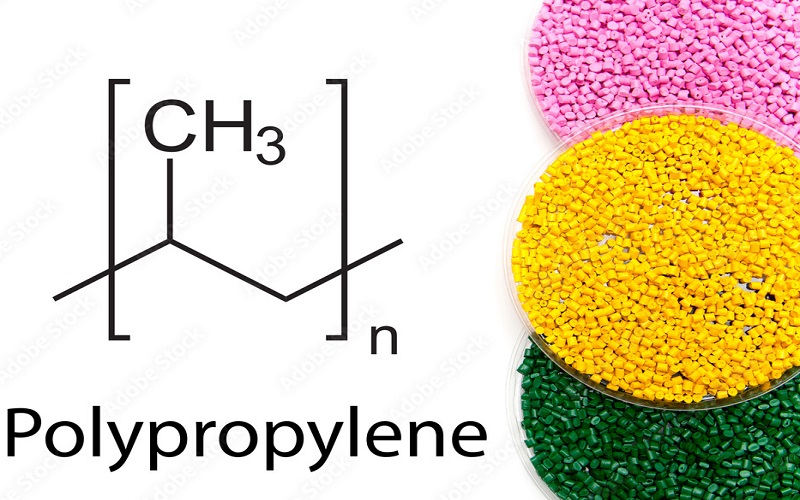
Different Types of Polypropylene
Polypropylene can be classified according to a number of aspects such as its molecular structure, polymerisation method and physical properties.
1.Classified According To Molecular Structure
Polypropylene is categorized by molecular structure, which varies depending on the catalysts used and the polymerization process.
This results in polymers with asymmetric carbon atoms in the main chain, causing methyl and hydrogen atoms to be arranged differently in space.
There are three different stereoregular structures of polypropylene:
- Isotactic Polypropylene (IPP): All methyl groups are aligned on the same side of the main plane.
- Syndiotactic Polypropylene (SPP): Methyl groups are in two different configurations and alternately arranged on both sides of the main plane.
- Atactic Polypropylene (APP): Methyl groups are arranged irregularly along the main chain.
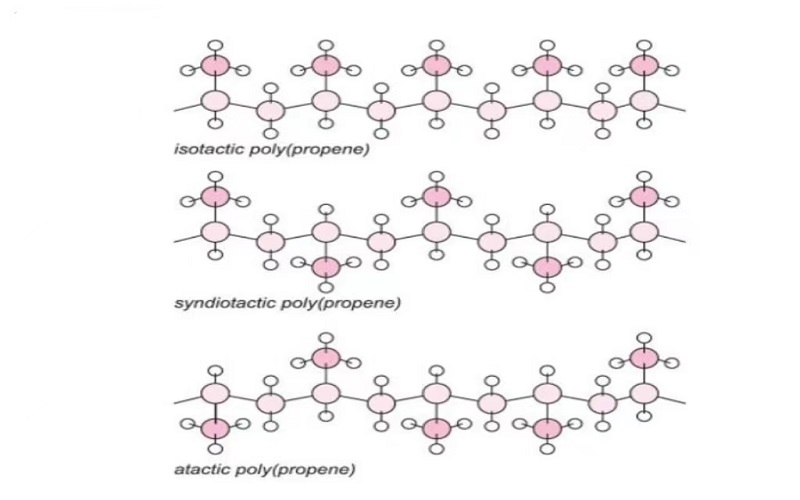
2.Classification By Aggregation Method
It is primarily divided into two types: homopolymers and copolymers.
Polypropylene Homopolymer (PP-H) is synthesized from a single propylene monomer, without any ethylene monomers in the molecular chain, which leads to high regularity and consequently, high crystallinity and poor impact resistance in the material.
Polypropylene Copolymer(PP-C) is made by polymerizing propylene monomers with a small amount of other monomers. Depending on the distribution of the comonomer in the polymer chain, copolymers can be categorized into polypropylene block copolymer (PP-B) and polypropylene random copolymer (PP-R).
- PP-B: This type is copolymerized from propylene and a portion of ethylene, typically comprising 7-15% ethylene.
- PP-R:This is obtained by copolymerizing propylene and a small amount of ethylene (1-4%) under heat, pressure, and catalysis.
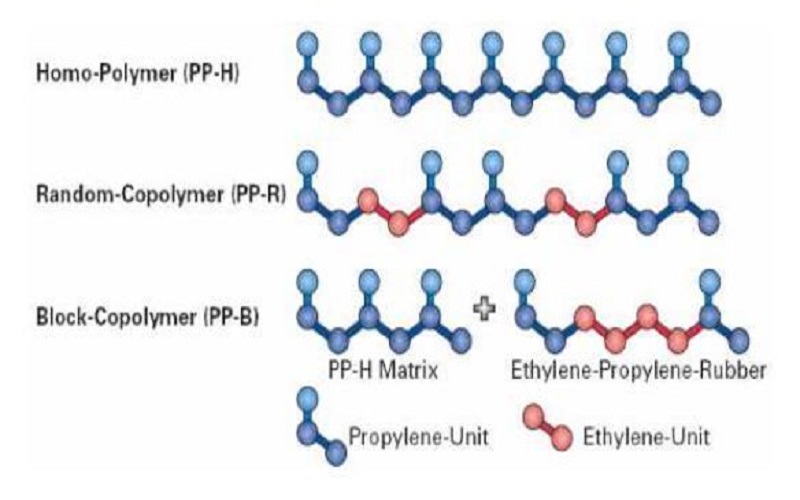
3.Classification by purpose
It can be categorized into various grades based on its application, including flat wire (narrow tape), fiber, film, extrusion, blow molding, and specifically polypropylene injection molding grades, among others.
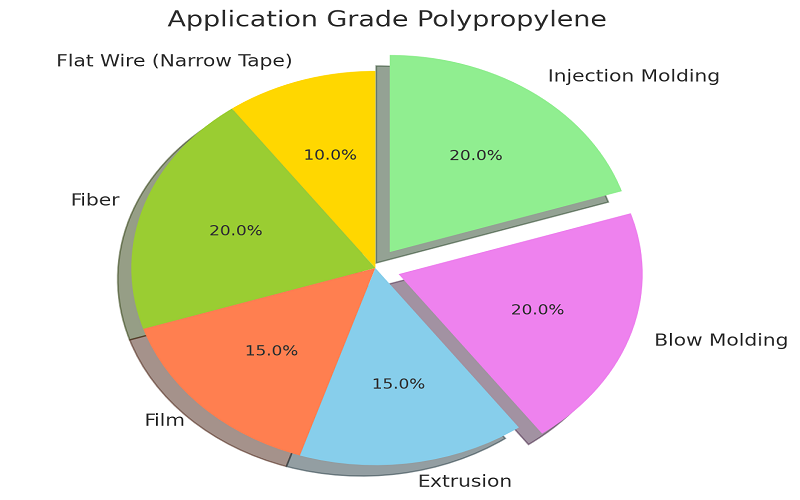
Polypropylene Homopolymer vs Polypropylene Copolymer
In comparing Homopolymer Polypropylene (PP-H) and Copolymer Polypropylene (PP-C), there are both similarities and differences.
Similarities
Both PP copolymers and homopolymers have very low water vapor permeability (0.5 grams/milliliter/100 square inches/24 hours).
Materials of both homopolymer and copolymer types exhibit excellent resistance to moisture, acids, bases, and solvents.
However, they are not resistant to aromatic hydrocarbons (such as benzene) or chlorinated hydrocarbons (such as carbon tetrachloride) solvents, and do not maintain oxidative stability at high temperatures like polyethylene.
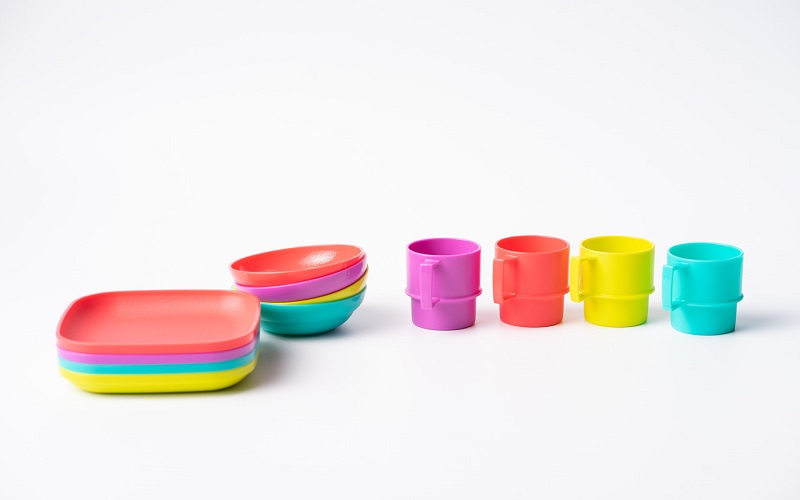
Differences
Homopolymer PP becomes very brittle at temperatures above 0°C, hence many commercial PP materials include 1-4% ethylene in random copolymers or a higher percentage of ethylene in block copolymers for enhanced properties.
- Flexural Modulus
Generally, random PP copolymers have better flexibility but lower rigidity than PP homopolymers.
They maintain moderate impact strength at temperatures down to 32°F, but their usability becomes limited at temperatures down to -4°F.
The flexural modulus (tangent modulus at 1% strain) of copolymers ranges from 483 to 1034 MPa, whereas for homopolymers, it ranges from 1034 to 1379 MPa.
- Barrier Properties
Both PP copolymers and homopolymers have very low water vapor permeability (0.5 grams/milliliter/100 square inches/24 hours).
These properties can be improved through orientation techniques.
- Chemical Resistance
Random PP copolymers exhibit strong resistance to acids, bases, alcohols, low boiling point hydrocarbon solvents, and many organic chemicals.
At room temperature, PP copolymers are generally insoluble in most organic solvents.
- Application
Here are the typical applications for each type of polypropylene:
Homo-polymer polypropylene (PP-H)
Strapping, blow-molded bottles, brushes, ropes, woven bags, toys, folders, electrical goods, household items, microwave containers, storage boxes, packaging film.
Block-Copolymer polypropylene (PP-B)
Bumpers, thin-walled products, strollers, sports equipment, suitcases, paint buckets, battery cases, thin-walled products.
Random-Copolymer polypropylene(PP-R)
Pipes, shrink film, dropper bottles, high-transparency containers, transparent household items, disposable syringes, packaging film.
Table of the properties of different types of polypropylene | |
Tensile Yield Strength | PP-H>PP-B>PP-R |
Rigidity | PP-H>PP-B>PP-R |
Impact Strength | PP-B>PP-R>PP-H |
Transparency | PP-R>PP-H>PP-B |
Low-Temperature Toughness | PP-B>PP-R>PP-H |
How To Distinguish The Types Of PP?
1.Differentiating by Appearance (Transparency)
- Homopolymer Polypropylene: Semi-transparent
- Block Copolymer Polypropylene: Milky white
- Random Copolymer Polypropylene : Highly transparent
2.Differentiating by Combustion Characteristics
- Homopolymer Polypropylene: When burned, it forms a flat string that does not stretch long.
- Block Copolymer Polypropylene: Upon ignition, it does not turn black and can be stretched into a very long round string.
- Random Copolymer Polypropylene: Similar to block copolymer, it does not turn black upon burning and can be stretched into a very long round string.
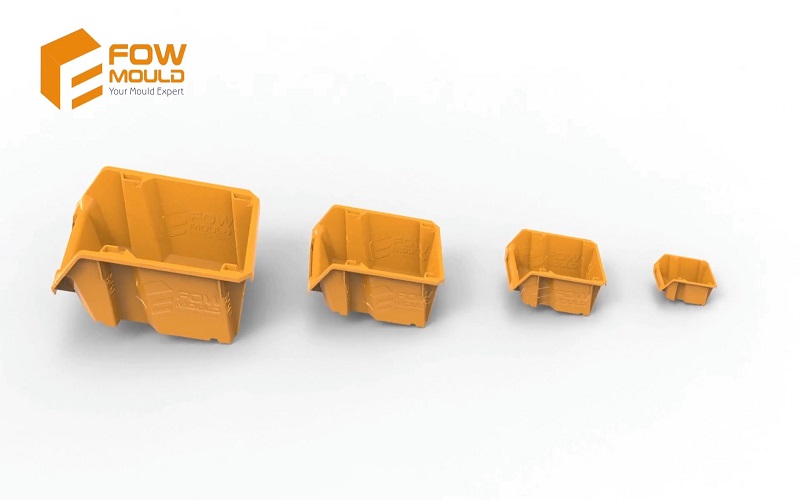
Conclusion
Overall, polypropylene is primarily available in three types: Homopolymer Polypropylene, Block Copolymer Polypropylene, and Random Copolymer Polypropylene, each with its unique advantages.
In general industrial applications, Homopolymer PP is most commonly used.
Block Copolymer PP is utilized in products requiring high impact resistance, while Random Copolymer PP is employed in the manufacture of products that need greater flexibility and transparency.
If you would like to learn more about PP materials, please follow FOWMOULD, where we continue to provide the latest updates on plastic materials.
